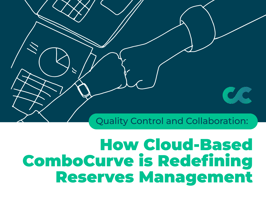We set out to simplify the process and give teams everything they need in one cloud-based software...
Oil and Gas Economic Valuation: How to Standardize Workflows
This disorder does more than affect everyday oil and gas economic valuation. It causes chaos and leads to inconsistent choices. It shakes the basic beliefs, methods, and tried-and-true ways of doing things. Unsteady footing leads to errors and poor choices. This erodes trust across the organization.
Given the many different areas of the industry and its ever-changing market, smooth operations are essential. In this fast-paced setting, duties cover asset management, business growth, and corporate roles. Team members often juggle several roles at once.
Although most teams use the same data for valuations, they often don’t have a common way of working together.
By using standard ways of working together, we can create a setting that encourages openness and makes teams perform better.
Oil And Gas Economic Valuation: Time is of the Essence
Speed in your operations is key. When those in charge ask, you must quickly and confidently execute robust oil and gas economic valuation. Being able to do this boosts your overall worth by ensuring you answer precisely and correctly.
This efficiency lets business teams explore other ways to get better. They won’t be held back by starting from scratch each time they face a new task – whether it’s a fresh pricing view, a chance to buy or sell assets, or comparing how the company is doing with its rivals. This freedom lets teams concentrate on new ideas and progress, not just routine tasks.
Here are four ways to make oil and gas economic valuation more streamlined across your company:
1. Unified Approach, Better Results
The first step to more efficient work is moving best practices to the cloud. By implementing cloud-based workflows, teams can create a consistent method for operations and valuations across the board. This distributed computing approach reduces the chances of miscommunication and mistakes with large and growing teams.
Next, it’s important to be clear about who does what. When people know what they’re responsible for, they can do their jobs better and focus on what’s most important.
Sharing past and present work is also key. By making this information readily available, key people like investors and auditors can easily see what they need. This promotes trust and builds faith in the process.
Lastly, companies should encourage working together by making it easy to share, copy, compare, and combine workflows. These features help people make decisions together, leading to better outcomes.
2. Clean Data, Clear Choices
Second, data is vital in oil and gas economic valuation. Having a single, central place for all critical business information makes it quicker to manage and find data.
Also, making sure all data sources—both company-owned (internal) and public (external)—match is essential. This ensures that everyone on your team has the same full, current data sets. As a result, decisions are more aligned across the company.

3. Oil and Gas Economic Valuation: The Foundation of Strategic Planning
Accurate forecasts are vital for planning. Making sure teams can quickly and safely see current and past outlooks helps them make better guesses. Adding processes for checking and approving forecasts into your workflow makes everything more accountable.
For more efficient work, create steady forecast outlooks using special management and adjustable settings. This way saves time on creating, reviewing, and changing forecasts. Also, by having a standard way to bring together company-wide oil and gas value outlooks, future plans are more regular and trustworthy.

4. Figuring Out Finances: Set Standards, Make It Easy, Win
You can’t understand and manage your finances without economic modeling. When you can model multiple assumptions simultaneously, teams can readily adapt to changing market conditions.
Like forecasting, it’s important to standardize roll-up processes for total company outlooks in economic modeling. This alignment provides a consistent approach to comprehensive financial forecasting.
To enhance understanding and communication of these models, visualize cashflows with embedded reports. This lets you interpret complex financial data more intuitively. As a result, you make sharper decisions driven by standardized oil and gas economic valuation workflows.

Oil and Gas Economic Valuation: In Closing
At any rate, success is not one thing. It’s 1,001 little things. Making things more efficient, ensuring data is reliable, making predictions more precise, and solid oil and gas economic valuation are at the top of the list. Standardized processes, clear roles, and easy teamwork reduce confusion and make work more productive. You need a single, central data system to make smart decisions. Also, synced data sources offer a full and current view of your operations.
You need to easily access current and past data to make accurate predictions and plan operations.
You can’t build a budget or plan production without oil and gas economic valuation. These best practices make your work more efficient and help you make better decisions. This leads to a more productive, transparent, and resilient business that can adapt to the constant changes in the industry.
Written by Trevor Owen and Travis Runge.




Blog comments